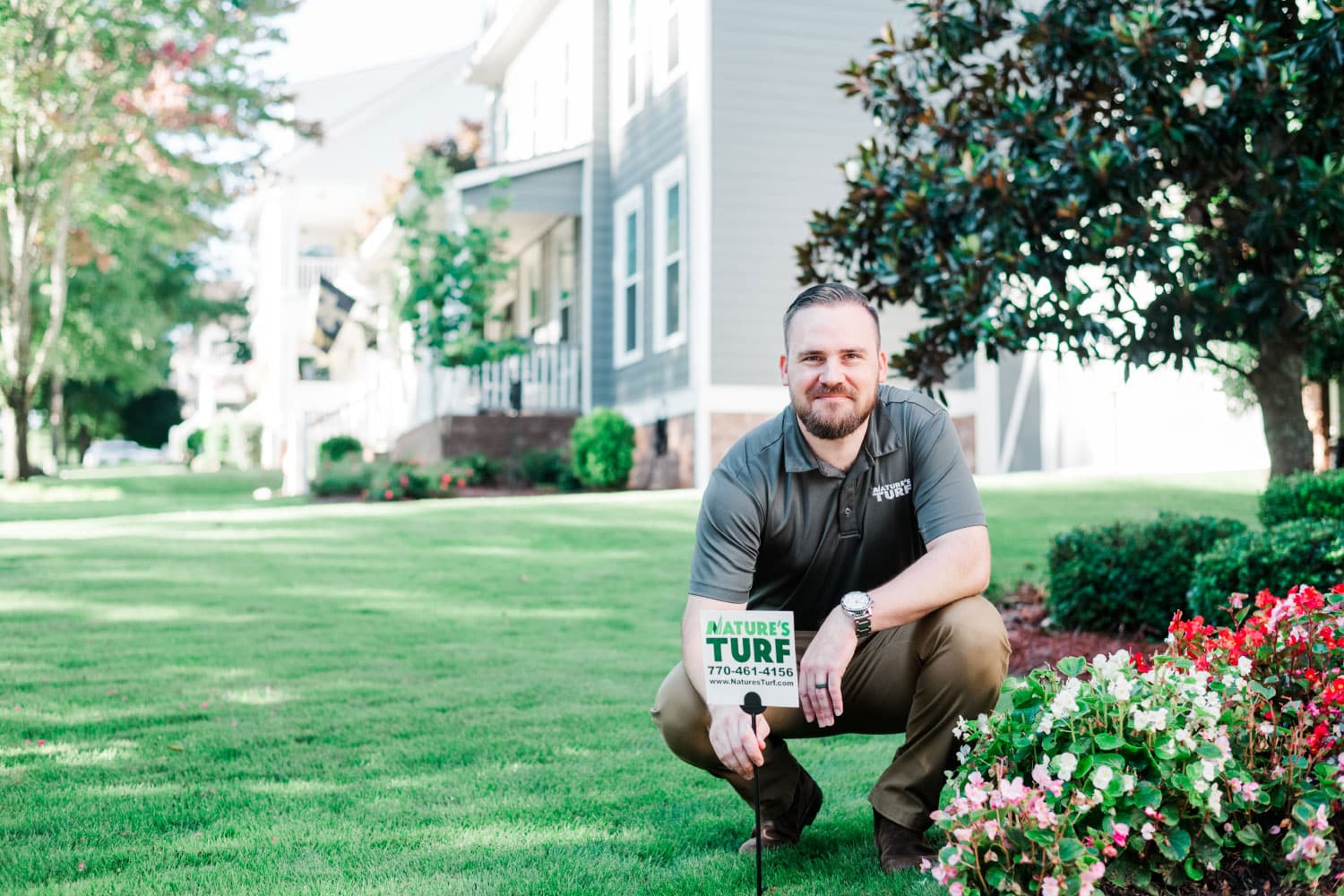Imagine it’s summertime in Atlanta. We’ve had some rain recently, and your bermuda lawn is beautiful, flush with green blades, and beautifully dense. You’ve done everything right. You’ve timed the watering perfectly, you’ve mowed weekly as recommended, and the technician from Nature’s Turf has done all the fertilizing and weed control your yard needs. You walk out on a Saturday morning, however, and there are what appear to be little spider webs in your yard. Within days, those webs give way to little tan spots. What are those webs and spots, what causes them to appear, and what can be done to discourage them?
What Is Dollar Spot?

Dollar spot, also known by its scientific name Sclerotinia homeocarpa, is an exceedingly common fungal pathogen in our metro-Atlanta bermuda lawns. It can exist in zoysia, but it isn’t nearly as common. As a fungus, it requires weather conditions conducive for development. That means excess moisture, warm,damp conditions, and a receptive host plant. Even with our best practices and intentions, afternoon pop-up showers are almost inevitable during a Georgia summer, and those showers create conditions that are primed for dollar spot.
The spider-web-like structures we see in a dewy lawn are actually mycelium, a root-like structure of a fungus, stretching between the blades of grass. Each place the mycelium touches will end up with a lesion or band. Best case scenario, the leaf dies. Worst case scenario, entire plants die back to the soil. Either way, the discoloration from these lesions or injured plants is what causes the small, characteristic tan spots in a lawn. Fortunately, small spots may be rapidly covered by new growth if the surrounding turf is healthy.
How Do I Prevent Dollar Spot?
Preventing dollar spot is easier said than done, and it requires our best efforts to make the environment and host inhospitable. As with any pest, let’s take a good look at the pest triangle–the three components that must be present for a pest problem to occur: host, environment, and pest itself. Consider each component and learn how to combat each one to determine how to attempt to prevent dollar spot from forming.
Pests need a receptive host. Since our desired turfs are prime candidates, making sure they are healthy discourages disease formation and shortens recovery time. This means making sure that fertility requirements, mowing techniques, watering strategies, and additional considerations such as aeration and thatch control are managed. Each contributes to plant health.
Even though the weather is impossible to control, we can do our due diligence to help resist dollar spot by ensuring our scheduled irrigation amount and timing are done appropriately. An inch of irrigation or rainfall per week over 2-3 non-contiguous days is typically sufficient for our bermuda and zoysia lawns. This guideline generally offers enough moisture for the plants without leaving excess for disease development. Each irrigation system is different, so individual calculations are key. Timing these cycles to occur in the morning is equally important. If done in the late afternoon or evening, excess moisture stays on the leaves overnight, encouraging foliar fungal development.
Lastly, we must consider the pathogen itself. Dollar spot is a bit ubiquitous. If you find your yard regularly afflicted and would appreciate less inclusions, fungal treatments can aid in lessening the amount of damage. At Nature’s Turf, we offer the Bermuda Disease Program, a focal point of which is Dollar Spot.
Important Takeaways:
- Dollar spot, also known by its scientific name Sclerotinia homeocarpa, is an exceedingly common fungal pathogen in our metro-Atlanta bermuda lawns.
- Preventing dollar spot is easier said than done, and it requires our best efforts to make the environment and host inhospitable. Here are some specific practices you can implement to hinder dollar spot in your lawn:
- Make sure your turf is healthy. Having a healthy turf is important for resisting and recovering symptoms. This means optimizing cultural practices (proper fertilizing, watering, mowing, aeration, and thatch control).
- Strategically water your turf to help reduce incidence of dollar spot.
- Determine if the disease is present and, if so, if damage is greater than a tolerable threshold. If so, treatment may be required and Nature’s Turf can establish the Bermuda Disease Program.








